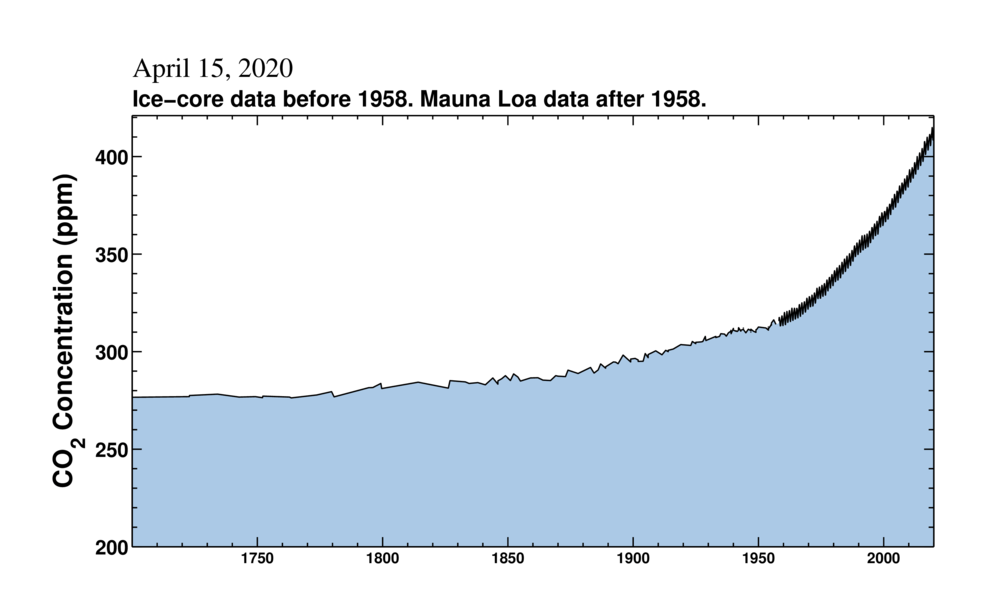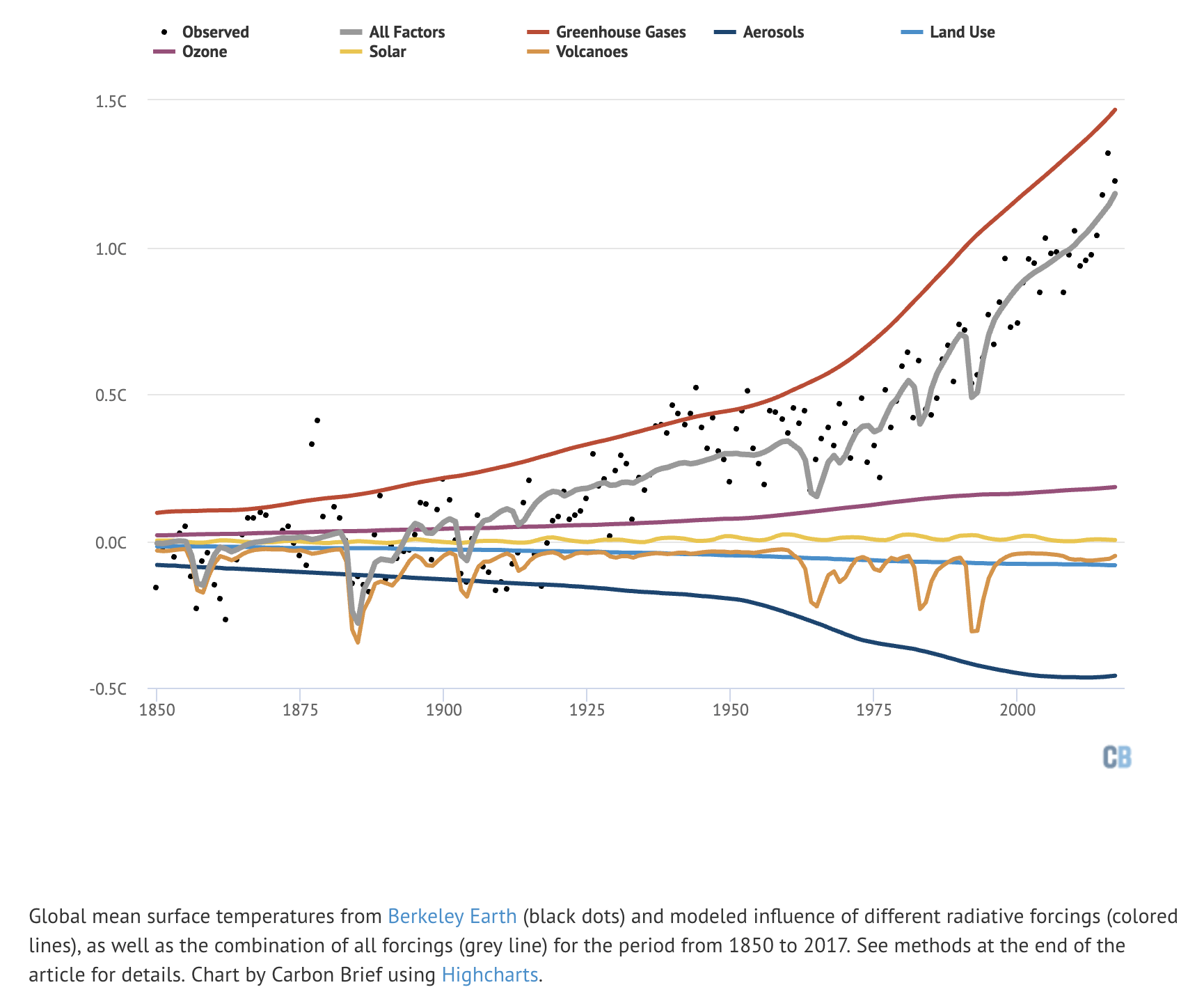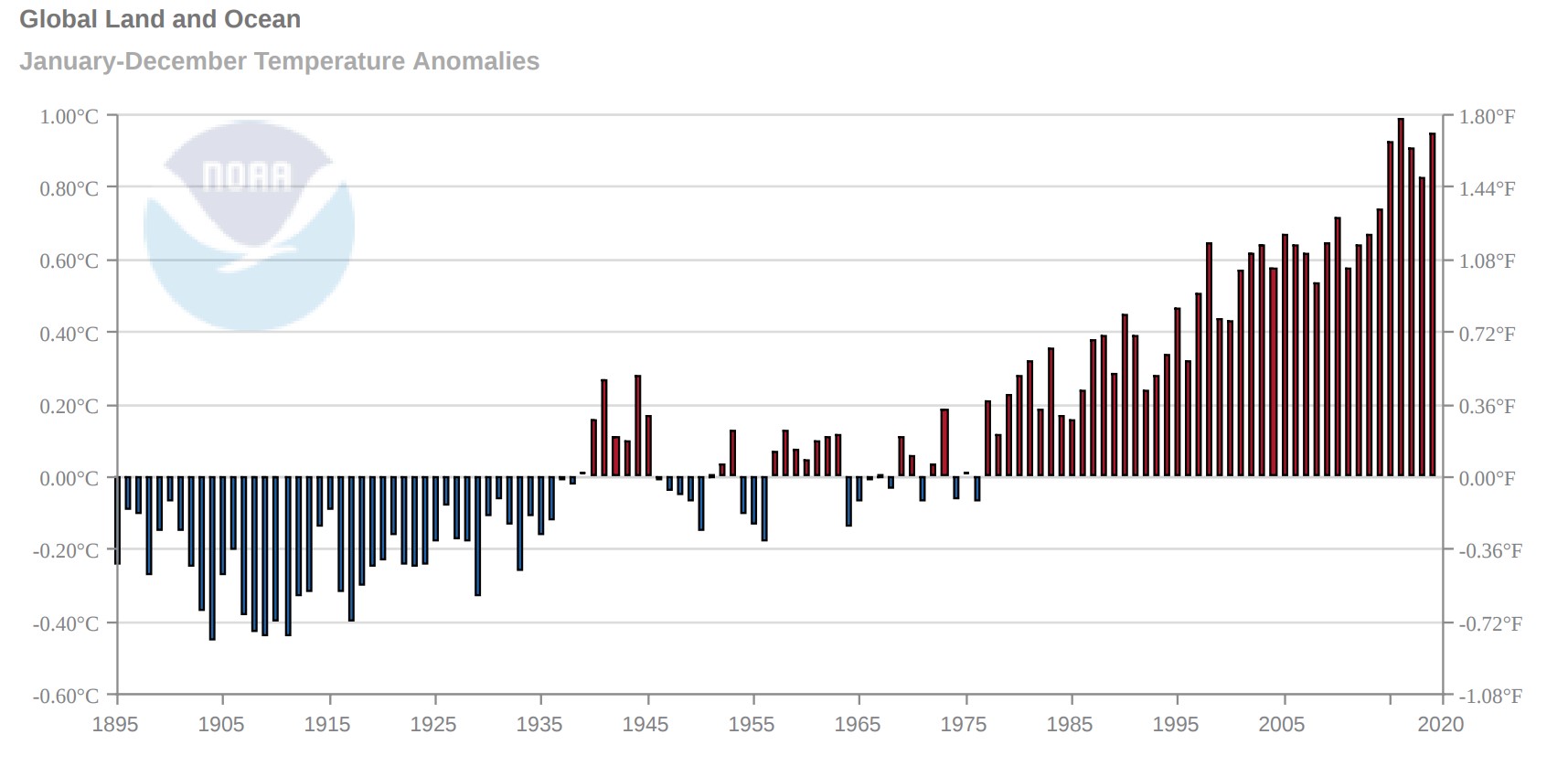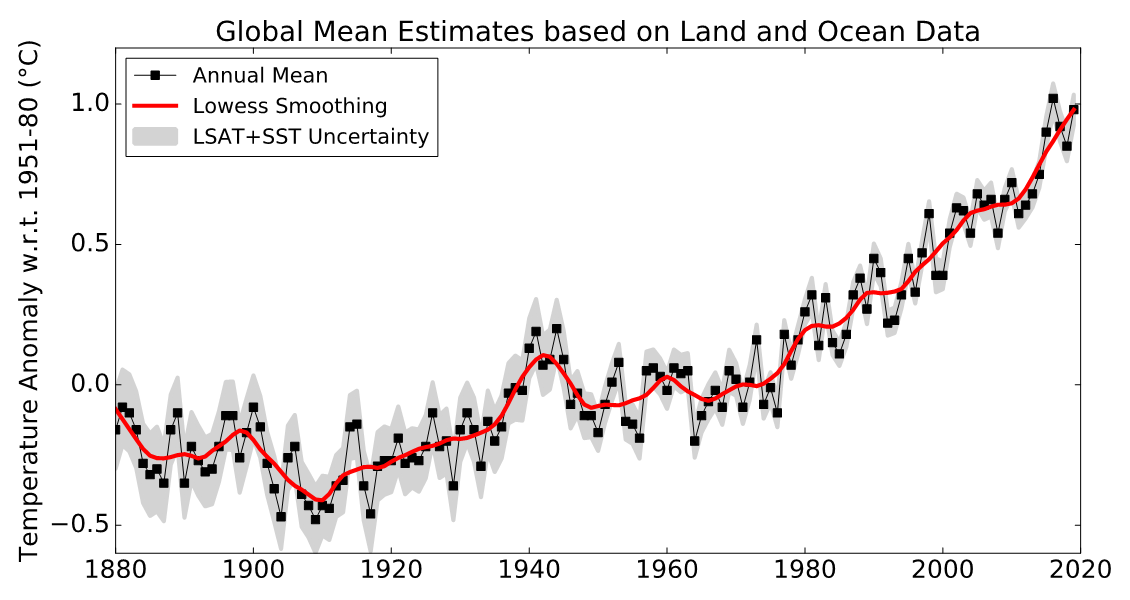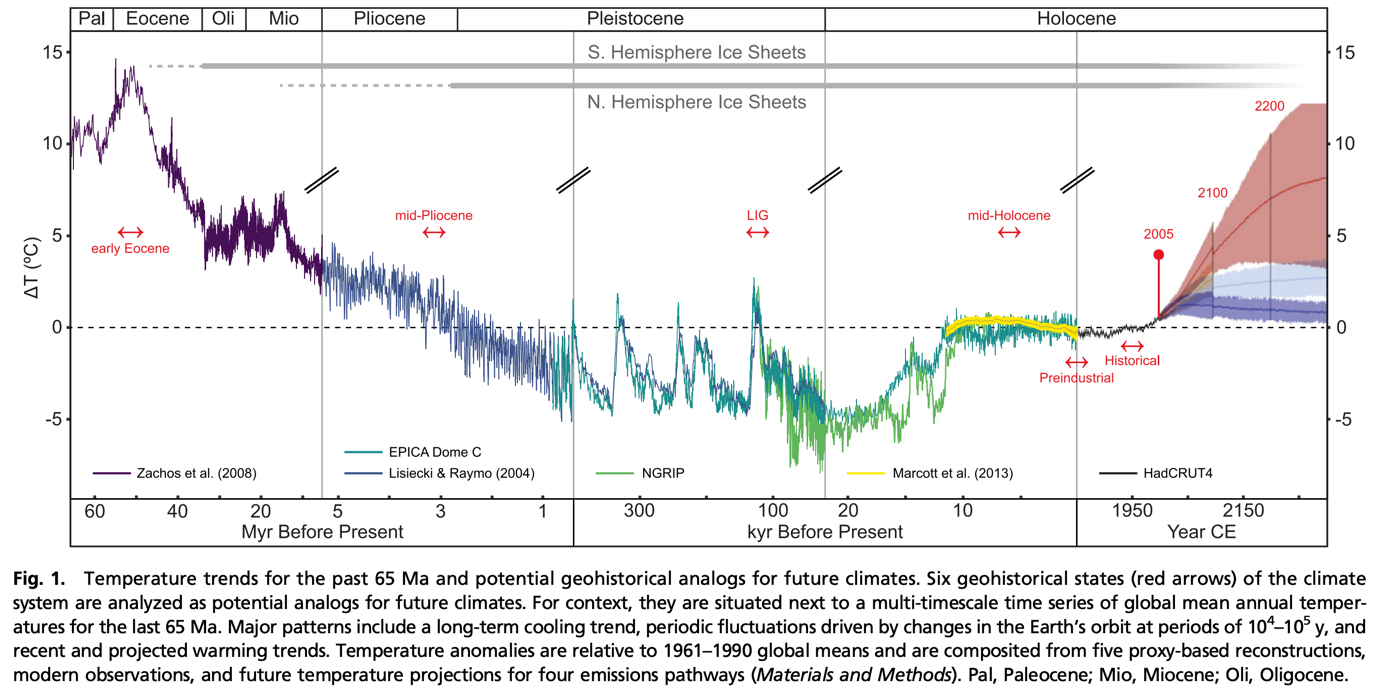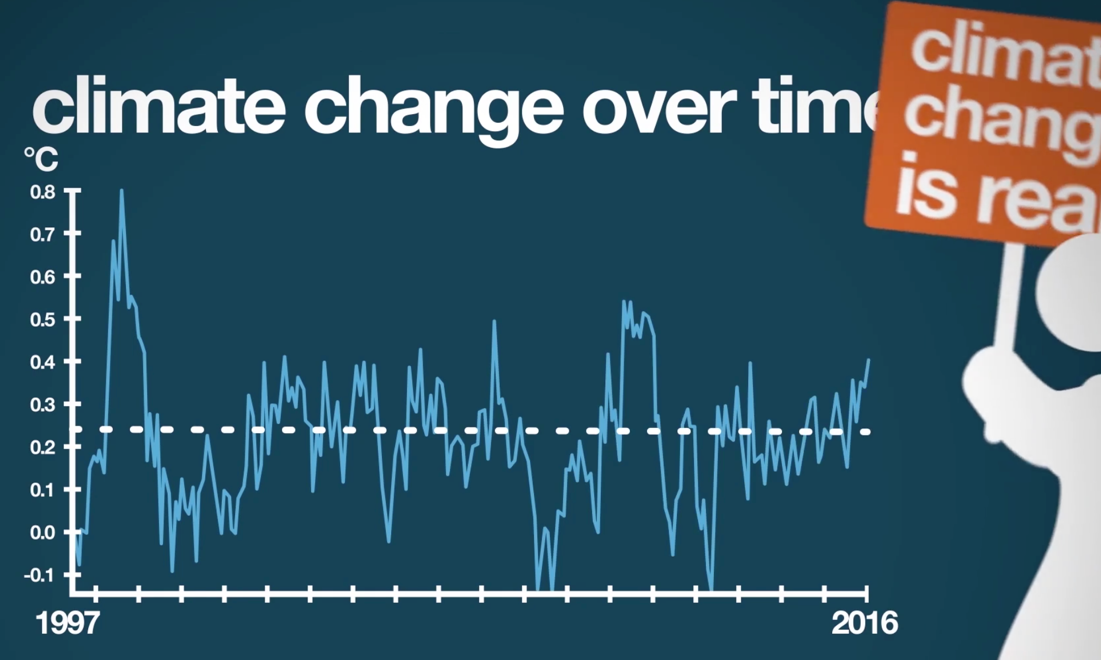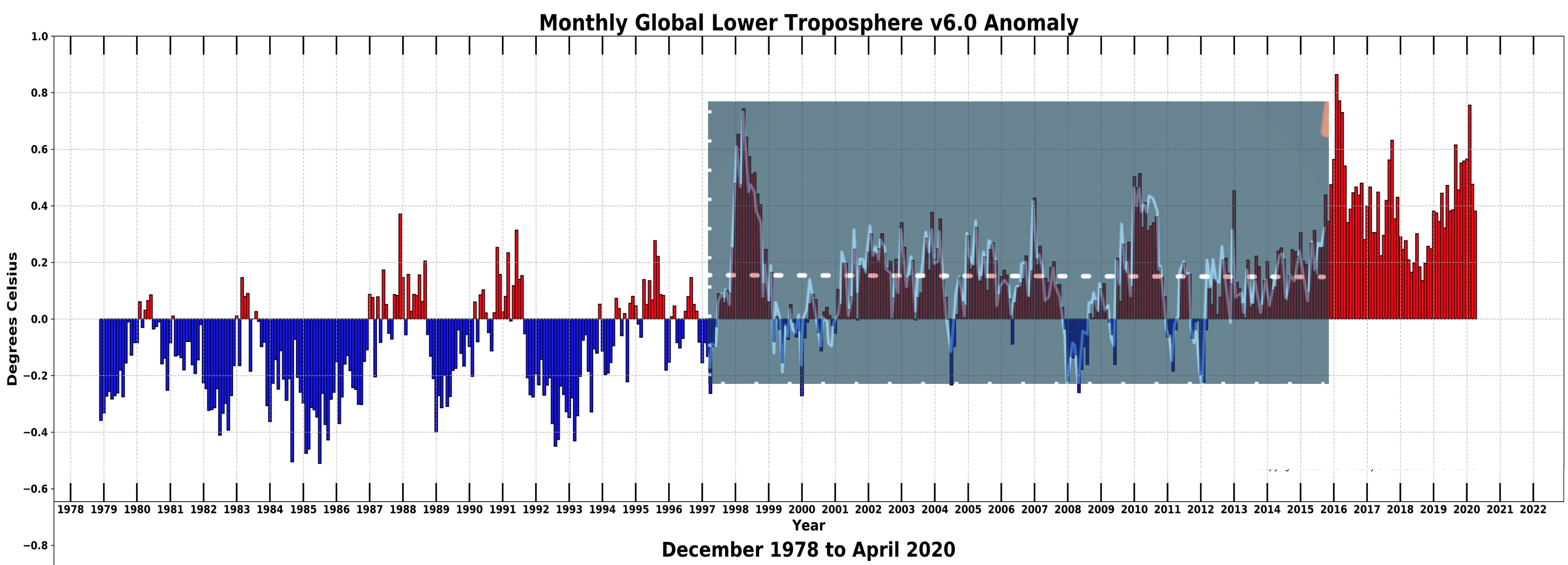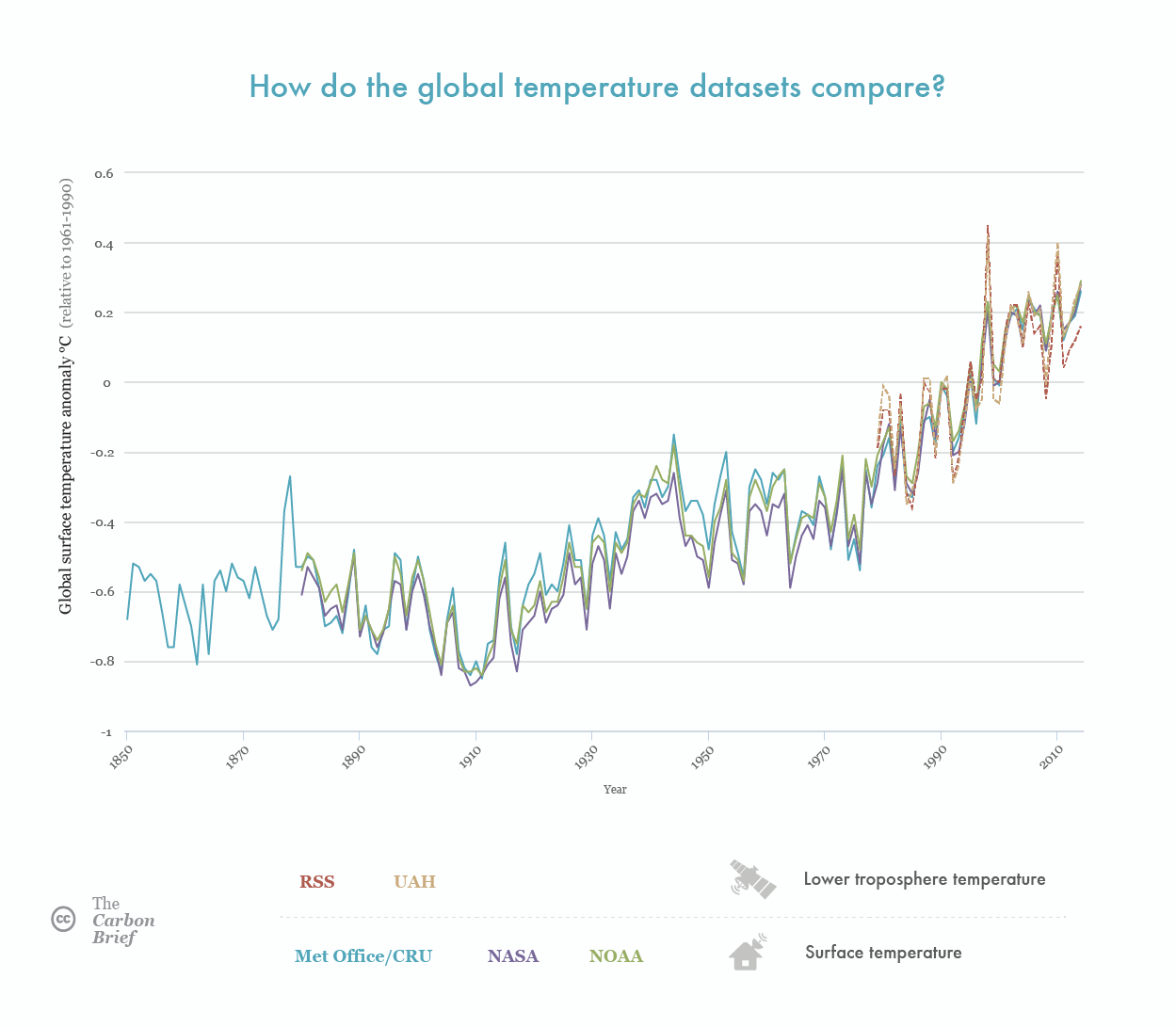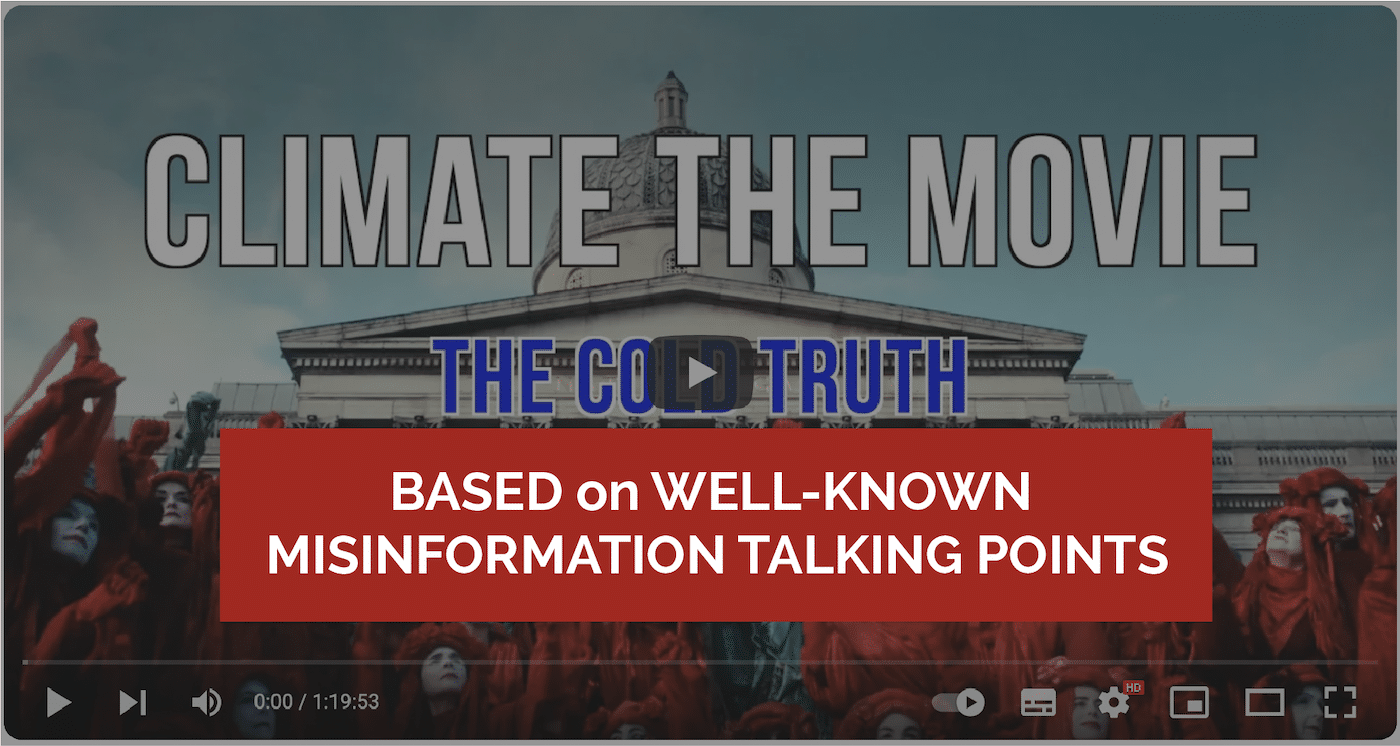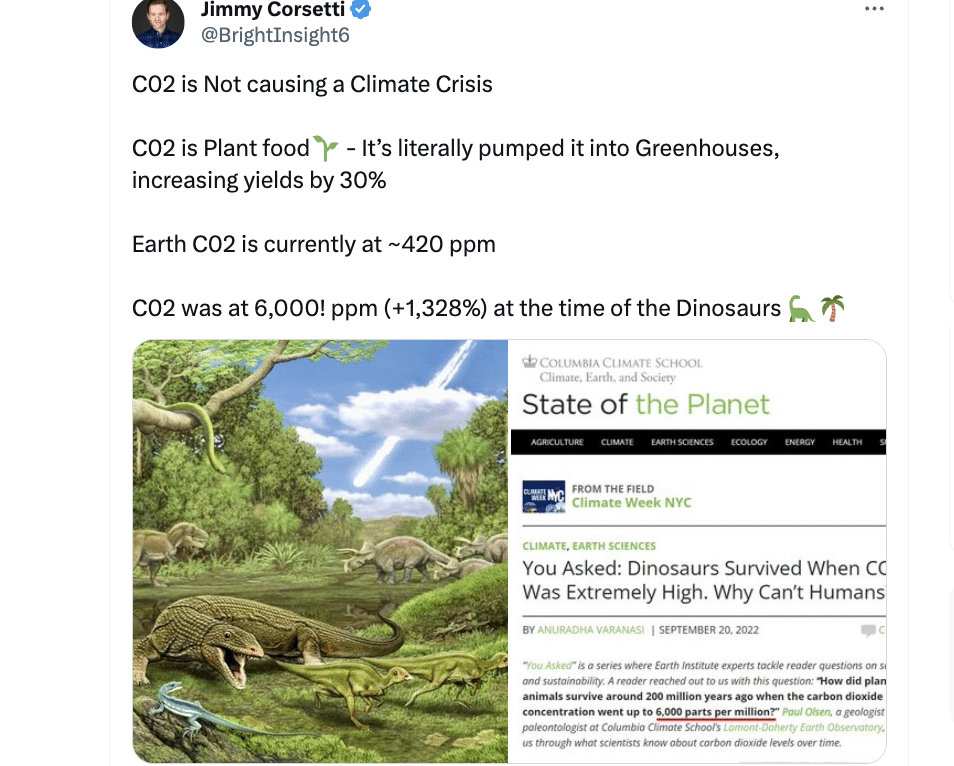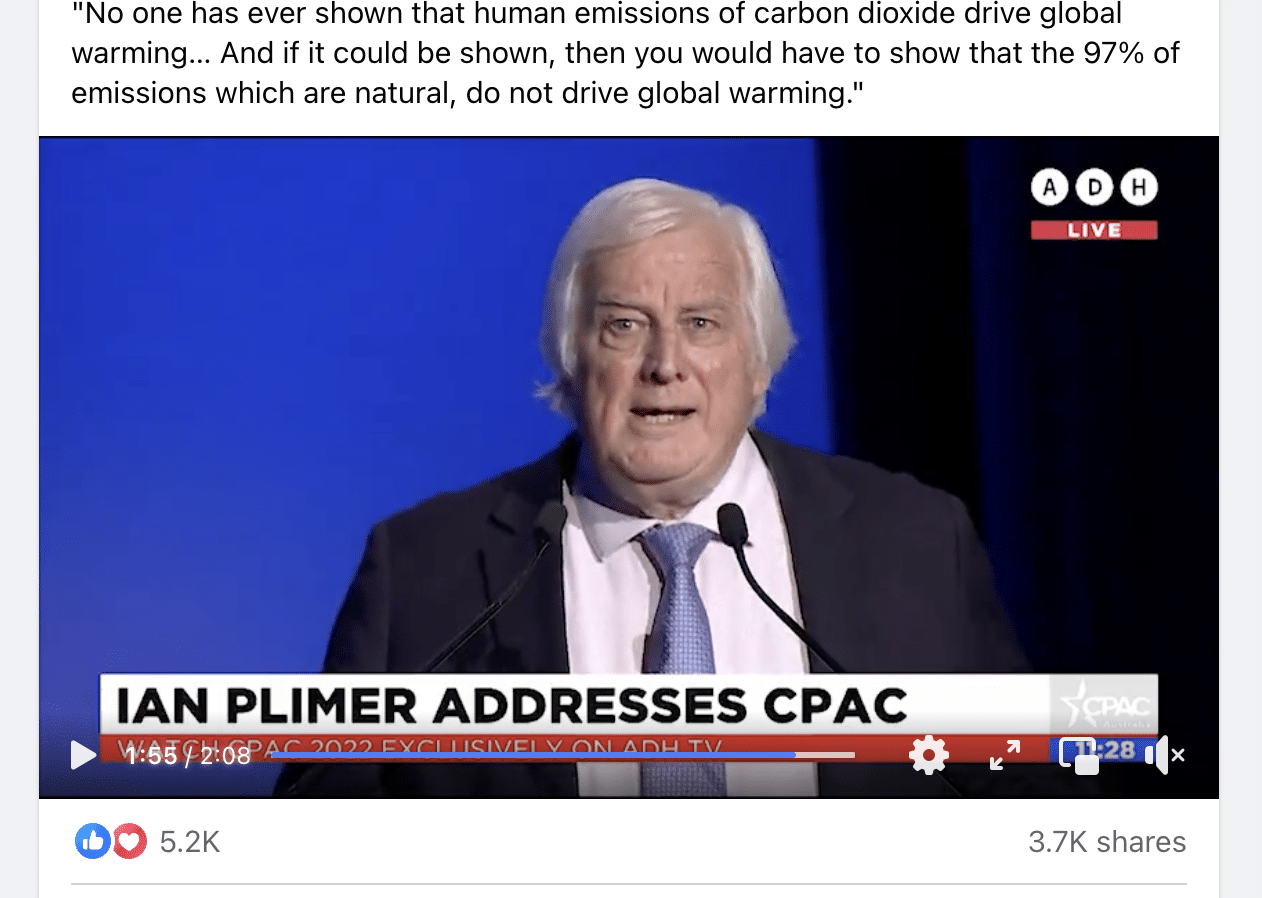- Climate
Video from PragerU makes several incorrect and misleading claims about climate change
Reviewed content
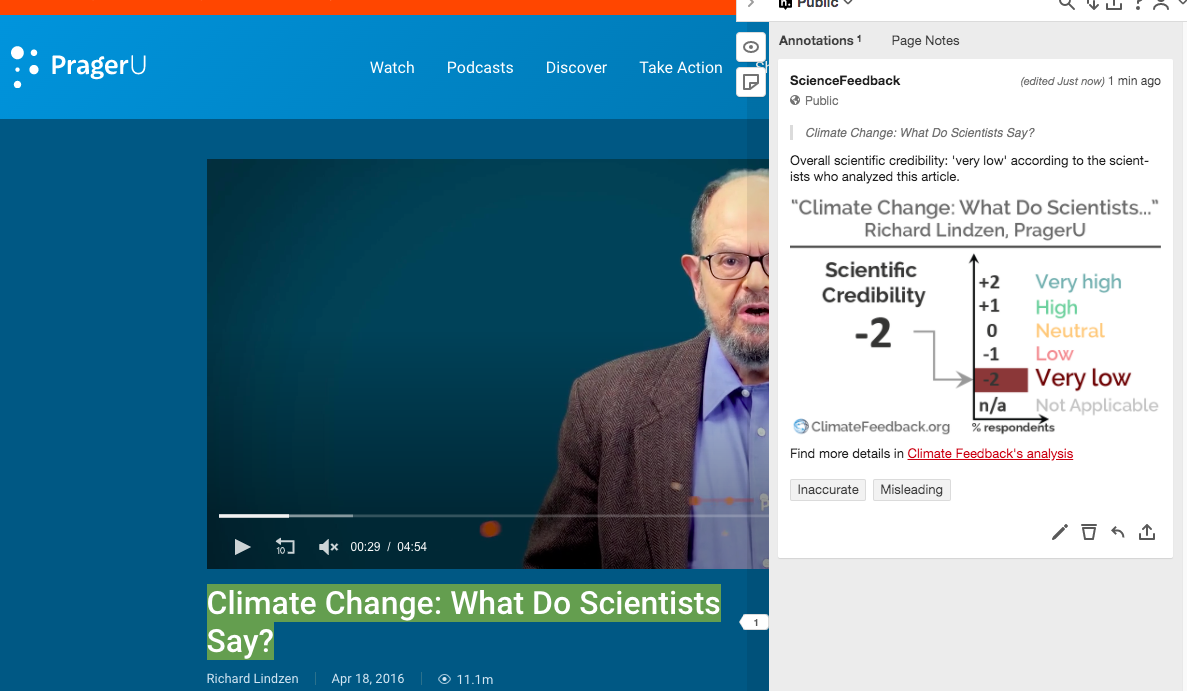
Headline: "Climate Change: What Do Scientists Say"
Published in PragerU, by Richard Lindzen, on 2020-05-08.
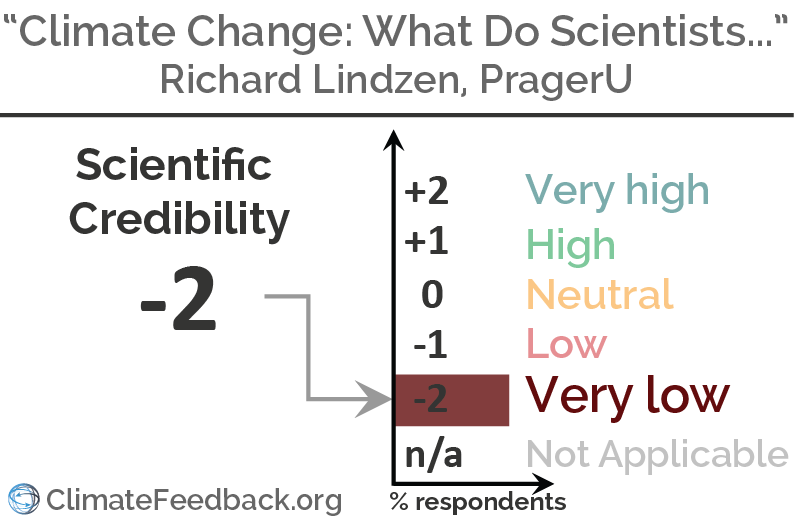
Summary
This video discussing climate change was first published on PragerU’s website in April 2016 and recently posted on Facebook in May 2020. The video has received more than 356,000 views on Facebook over the past week. Scientists that evaluated the video found several claims about climate change to be incorrect and misleading to viewers.
In the video, former MIT Professor Richard Lindzen claims “there is no evidence that CO2 emissions are the dominant factor” in climate change. This is false. Human-caused increases in CO2 emissions have been the primary driver of climate change[1,2]. Atmospheric concentrations of CO2 are higher today than they have been in at least the past 800,000 years[1,2].
Figure—The Keeling Curve, a daily record of global atmospheric CO2, shows relatively stable CO2 concentrations from 1700 to 1950, as measured by ice-cores. After 1950, CO2 concentrations rose rapidly from 300 to over 400 ppm, as measured at the Mauna Loa Observatory. From Scripps Institute of Oceanography.
Human-caused emissions of greenhouse gases and aerosols account for approximately 100% of the global warming trend observed since 1950 (see figure below)[3].
Figure—The estimated role of different factors influencing global surface temperatures from 1850 to 2017. Observed temperatures are shown in black dots. Global warming over the past 150 years was primarily driven by greenhouse gas emissions (red). From Carbon Brief[3].
Lindzen also misleadingly claims that over the past 30 years, “the climate has changed remarkably little,” but does not specify what “little” is relative to. As described by a reviewer below, a figure of what appears to be global monthly temperature anomalies from 1997 to 2016 is shown to support this claim, although the y-axis is not labeled. This subset of temperature data is cherry-picked from the full record of global monthly temperature anomalies, and therefore misleads the viewer about the degree of global warming that has occurred. The full record of global monthly temperature anomalies shows a clear pattern of global warming from the late 1800s to 2019 (see figure below). There is also scientific evidence that “the warmest period of the past two millennia occurred during the twentieth century for more than 98 percent of the globe”[4].
Figure—Global temperature anomaly data relative to the 20th century average temperature from the Global Historical Climatology Network-Monthly data set and International Comprehensive Ocean-Atmosphere Data Set. These data sets show consistent global warming trends. From NOAA.
Another misleading claim made in the video is that “CO2 is a greenhouse gas without which life on Earth is not possible, but adding it to the atmosphere should lead to some warming.” Even though CO2 is important for life on Earth, increased concentrations of atmospheric CO2 have imbalanced the global carbon cycle and caused a range of harmful effects including trends in weather extremes, ocean acidification, and other impacts on land and marine ecosystems[5-8].
Overall, several claims made in the video about climate change are incorrect, not supported by scientific evidence, or misleading to the viewer, as the reviewers detail below.
Reviewers’ Overall Feedback

Professor, University of New South Wales
If you watched this video, you have unfortunately wasted 5 minutes of your day. Richard Lindzen is reiterating a few wrong statements on climate change that have been debunked repeatedly in the past (e.g. “there is no evidence that CO2 emissions are the dominant factor” of climate change)[1,2]. He is also very skilled at presenting a few statements on climate change that are right in a misleading way, so that the overall message becomes wrong (“climate is always changing”, “there are many reasons why the climate changes”). He misrepresents the way the IPCC works. He also claims that there is a significant number of specialists (a whole “group”) sharing his “understanding” of climate science, which is also not true.

Assistant Professor, San Jose State University
There are many inaccuracies contained within the video in question. The text below deals with just the first one of them.
At the 8 second mark, Dr. Lindzen claims that the climate has changed “remarkably little” over the past 30 years without any reference to what “remarkably little” is relative to. When put in proper context, it is not true that the climate has changed “remarkably little” over the past 30 years.
Over the past 30 years, the global average temperature has warmed by about 0.7 degrees Celsius (red line from 1990 to 2020 in the global temperature dataset below):
Source: NASA GISTEMP: https://data.giss.nasa.gov/gistemp/graphs_v4/
Now we want to put this 0.7 degrees Celsius warming over 30 years in context of other large climate changes in earth’s history. Some of the largest and fastest global climate changes in the geological record are associated with the Milankovitch cycles. The most recent Milankovitch cycle transition was that from the last glacial maximum about 20,000 years ago (when about a mile of ice was on top of Boston) to the Holocene climate starting about 10,000 years ago and this transition was characterized by a global warming of about 5 degrees Celsius.
Thus, this rather dramatic climate change was characterized by a rate of change of 5 degrees Celsius over 10,000 years or 0.005 degrees Celsius per year[9].
Now we can put the global warming of the past 30 years in context. 0.7 degrees Celsius over 30 years is 0.023 degrees Celsius per year. So the warming of the past 30 years has been about 5 times (0.023/0.005 = 4.6) faster than the warming that occurred over the transition from the last glacial maximum to the preindustrial climate.
I have made an animation placing contemporary global warming in the context of previous climate changes:
Contemporary Global Warming placed in geological context. https://t.co/DMuiKptjPi pic.twitter.com/WI4jRQhrs4
— Patrick T. Brown (@PatrickTBrown31) August 20, 2018
Below is a static graph of a similar analysis:
Source: Burke et al (2018)[10].
Additionally, Dr. Lindzen implicitly supports his claim of “remarkably little” warming with a misleading figure. At the 18-second mark, the video shows a graph of what I believe are satellite-derived monthly temperature anomalies. However, this time period has been cherry-picked to show “remarkably little” warming.
Below is their graph overlain on the full satellite record (which began in 1978). The full satellite record shows that extending their graph in either direction (forward or backward in time) would reveal a clear warming trend.
Source: University of Alabama Huntsville: https://www.nsstc.uah.edu/climate/
When these satellite derived temperature products (RSS and UAH in the graph below) are displayed as annual values and plotted on the same axis as the instrumental temperature datasets (Met Office, NASA and NOAA in the graph below), they largely agree with each other. In particular, they all show the same large (in a geological context) rate of warming over the past several decades:
Source: Carbon Brief.
Overall, Dr. Lindzen makes both a verbal claim and a visual claim that the rate of contemporary global warming is small, and both claims are false.

Postdoctoral research fellow, University of Antwerp
CO2 is indeed fundamental for most life on Earth. Plants need CO2 to grow and they are at the base of the food chain. However, this fact is often abused to claim that increasing CO2 concentrations is mainly a good thing. Although plant growth is often stimulated by increasing CO2 concentrations, CO2 also causes ocean acidification and warms the planet, thereby generating a cascade of effects from melting of glaciers and sea level rise to altered precipitation patterns and increasing frequency and intensity of extreme weather events such as heatwaves and droughts[5-8]. These in turn threaten water and food supplies, and as climate change progresses, this is also likely to undo much of the beneficial effect that CO2 has on plant growth[8]. I would say this claim is thus misleading in the context of this video.
REFERENCES
- 1 – IPCC (2007) Summary for Policymakers. In: Climate Change 2007: The Physical Science Basis. Contribution of Working Group I to the Fourth Assessment Report of the Intergovernmental Panel on Climate Change.
- 2 – IPCC (2014) Climate Change 2014: Summary for Policymakers. Contribution of Working Groups I, II and III to the Fifth Assessment Report of the Intergovernmental Panel on Climate Change.
- 3 – Hausfather (2017) The extent of the human contribution to modern global warming is a hotly debated topic in political circles, particularly in the US. Carbon Brief.
- 4 – Neukom et al. (2019) No evidence for globally coherent warm and cold periods over the preindustrial Common Era. Nature.
- 5 – Friedlingstein et al (2019) Global carbon budget 2019. Earth System Science Data.
- 6 – Doney et al (2009) Ocean acidification: The other CO2 problem. Annual Review of Marine Science.
- 7 – Mbow et al. (2019) IP Food Security. In: Climate Change and Land: an IPCC special report on climate change, desertification, land degradation, sustainable land management, food security, and greenhouse gas fluxes in terrestrial ecosystems. IPCC report.
- 8- Tubiello et al. (2007). Crop and pasture response to climate change. PNAS.
- 9 – Nolan et al (2018) Past and future global transformation of terrestrial ecosystems under climate change. Science.
- 10 – Burke et al (2018) Pliocene and Eocene provide best analogs for near-future climates. PNAS.

